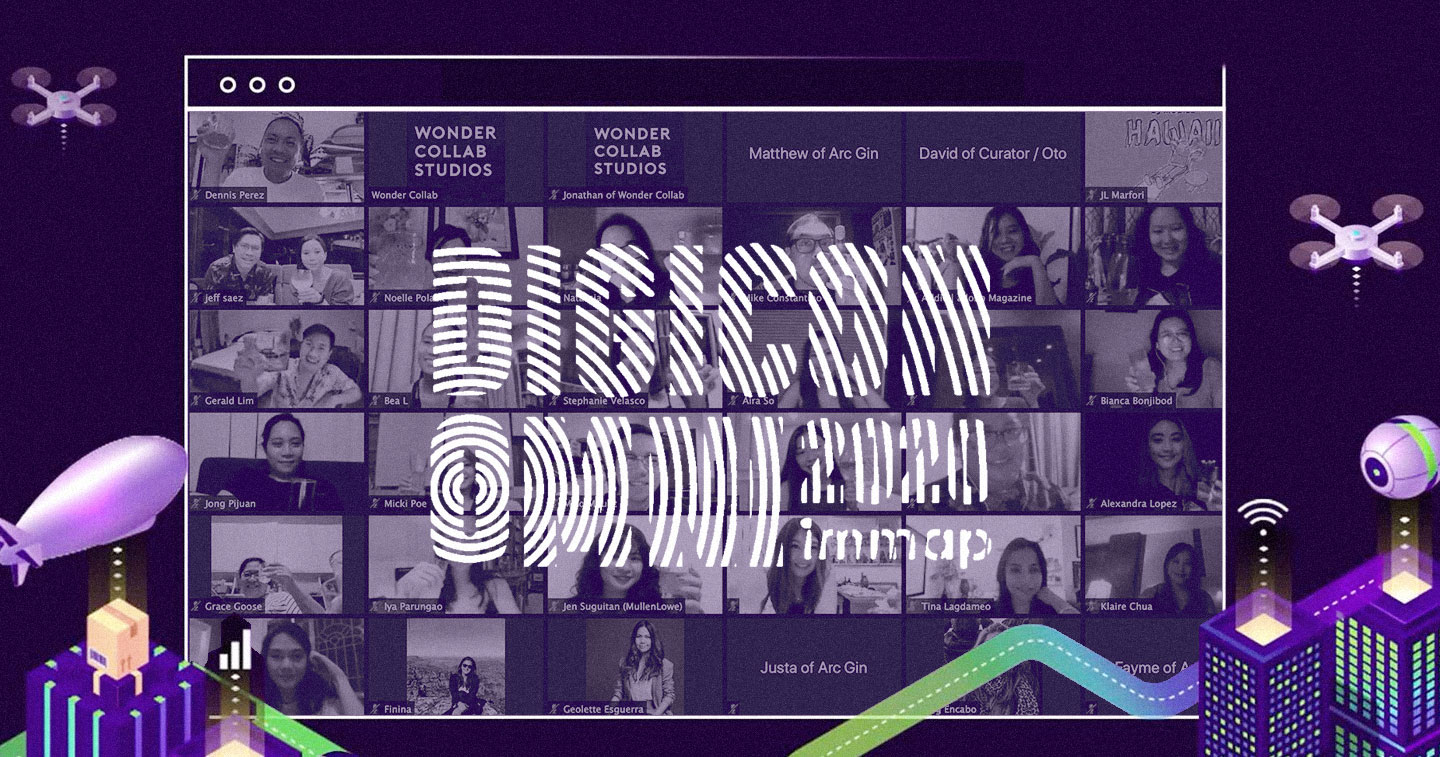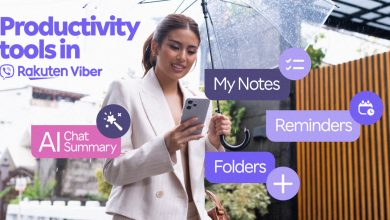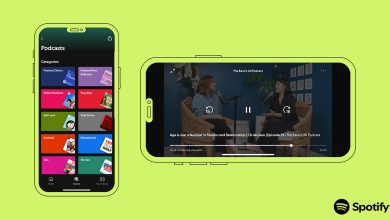MANILA, PHILIPPINES– The Philippine International Convention Center may be closed this year but Digicon is having no holds barred as they went digital and transformed into “Digicon Omni.”
With its overarching theme of “Mindsets and Skillset,” this year’s edition reached thousands of delegates to empower the industry to champion digital success. Here are six of our favorite lessons:
Digital transformation rests on management understanding
In Manulife’s Exclusive Session, entrepreneur and author of “The Lean Startup” Eric Ries dispelled the notion that all tech companies have good intentions that just went wrong. In almost every company that was involved in a scandal, Ries stated, there was someone who saw the implications coming but the internal hierarchy and the system has made it impossible for the managers and executives to face the consequences.
“There is a civic responsibility to care about the health of the human beings and the societies they inhabit that you interact with as a corporation.”
“When disruption happens, civic values can be lost inadvertently.”
“People use technology to produce magical outcomes,” he added. He pointed out that not everything that seems magical is using technology and that management of companies should have a tangible team that is accountable for experimentation and innovation.
“I think innovation should be a function in their org chart,” he added.
Ries circled back to entrepreneurship by saying that it is a local phenomenon in most countries because of culture.
“Cultural factors that are not cultural in the sense of being racial groups or ethnic groups. They are about openness and tolerance of difference, welcoming immigration and ideas pouring into your life.”
Be a platform for opportunity and for good
Among the speakers at this year’s Digicon is Neil Trinidad, the Country Chief Marketing Officer of Lazada, who leveraged on the rapid digitalization of the country to become more than just a marketplace.
“During this pandemic, we realized all of a sudden that we had a mission. And that mission is really to help consumers and SMEs bounce back.”
From this stemmed their Bounce Back Together Stimulus Program to revitalize incoming and existing vendors grow their business online. The results they yield is something that had a great impact on them personally.
“Something very close to our hearts is the ability of a platform to help MSMEs so during this time, we really worked on on-boarding board entrepreneurs to continue their businesses online recovery.”
Being a platform for opportunity and good came in three prongs for Lazada: “Using the scale of the platform to engage and entertain in real time: shoppertainment. Using the scale of the platform to create opportunity for Filipino MSMEs as well as creators. And lastly, to use the scale of the platform to connect consumers and communities with causes.”
For Lazada, transformation was nothing like any other. While everyone else is abuzz with digital tranformation, they looked inwards and transformed themselves to rise up and hone online shopping into so much more.
Don’t get approval from clients, get it from customers
For his part, Tay Guan Hin, the Chief Creative Officer of BBDO Singapore, showed what it means to tell creative brand experiences through visual stories.
“I love creating innovative work for brands to solve their challenges and along the way, I’ve managed to win a few awards.” Having taken home metals like Grand Prix at Spikes Asia, and Singapore’s Gold Young Cannes Lion, the creative chief definitely knows his way around thumb-stopping content.
“Don’t think outside of the box. Think what you can do within the 9×16 box.” With this, he shared creative principles of vertical storytelling including relationship between multiple screens, taking advantage of the height, and emojifying stories.
Going vertical, said Guan Hin, also means that the work considers the consumer mobile behavior.
“Don’t do work to get approval from your clients. Don’t do work to get approval from their bosses. Do work that you will get your customers to love your content. That is the most important thing.”
Create moments in pop culture
Moments in pop culture easily sours, says Founding Partner at ideas agency GIGIL, Badong Abesamis, during his talk entitled “From Oreo to Orocan.”
This is why when a blackout disrupted the San Francisco 49ers-Baltimore Ravens NFL championship in 2013, Oreo took the opportunity to put their brand in the spotlight.
Power out? No problem. pic.twitter.com/dnQ7pOgC
— OREO Cookie (@Oreo) February 4, 2013
“Creative agility means creative rigidity.” While the tweet certainly has thousands of people talking about it, Abseamis surmised that agility alone will not work if it is not coupled with creative rigidity. With that, he gave examples of other copies that would not have made as much impact as the copy “You can still dunk in the dark” did.
In his own company, Abesamis made an example of how they hijacked Muji’s viral dipper to make a campaign for Orocan.
However, Abesamis warned that one should “endeavor to create more than just crazy stunts.”
While being in the moment is key for seeing opportunities like this, he said: “If you can’t ride that moment in pop culture, create that moment.”
Take bold steps in investing in your people
In his talk “How a digital media business senses success through the pandemic,” Summit Media’s Chief Executive Adviser Ashish Thomas explained how they transformed their media company into full digital solutions.
Launching new titles such as Reportr and Top Bikes as well as giving new capabilities to existing brands is how the media company responded to its customers’ needs. For example, as parents navigate distance learning with their kids, they turned to Smart Parenting and its content commerce.
“Our audiences in Smart Parenting are learning to teach their children from home because we have started home schooling sections.” For its partners, Summit also introduced live-streaming for some of its advertisers. Timing was of the essence for Summit since it has gone full digital since 2018.
Tomas surmised that “embracing the new” prepared them for the pandemic. “I think the biggest risk the company has taken is to invest more in people and invest more in capabilities. The initial reaction of business is to conserve and so we’ve done our part of it to conserve but we continue taking those bold steps in launching and testing new brands, launching and testing new capabilities—hiring great people and we’re going to continue doing that.”
“We are truly moving in that direction of being a digital solutions organization rather than just a media property”
Don’t be vanilla ice cream, be a halo-halo
Creative Director Unskippable Labs at Google, Pei Ling Ho, talked about creative bravery and why it is important now. Likening the consumer’s media diet to ice cream, she discouraged brands from being vanilla—bland, familiar, and forgettable—and instead be a halo-halo that quenches with different ingredients and textures.
Analyzation of thousands of ads at Unskippable Labs have resulted in two points have proved to be effective: (1) Ninety percent of effective ads make no reference to the crisis at all, and (2) It pays to go hyperlocal and tap into local sentiments. This is because audience are hungry for their personals stories, and there are all sorts of possible ways to tell the story.
“Creative remains your last unfair advantage to help you maximize your return on investment.”
Consumer’s screens are filled with new voices and experiences of diversity. According to her, this means that factors such as love in what one does, and relevance to what is happening in people’s lives send stronger signals than age or gender-based targeting.
“There’s always a whole profusion of different ways to tell which nuanced stories that people want to consume.”
Pei Ling ended by saying that data exists not for advertisers to avoid risks but to experiment with formats and find the wonder in accidental beauties and small bravery.
“Layer on ingredients that your audience wants. Be relevant to your market’s needs and preferences. Keep on the surprises. Listen to the signals the audiences are sharing so that they can learn of the halo-halo and how good it can be.”











